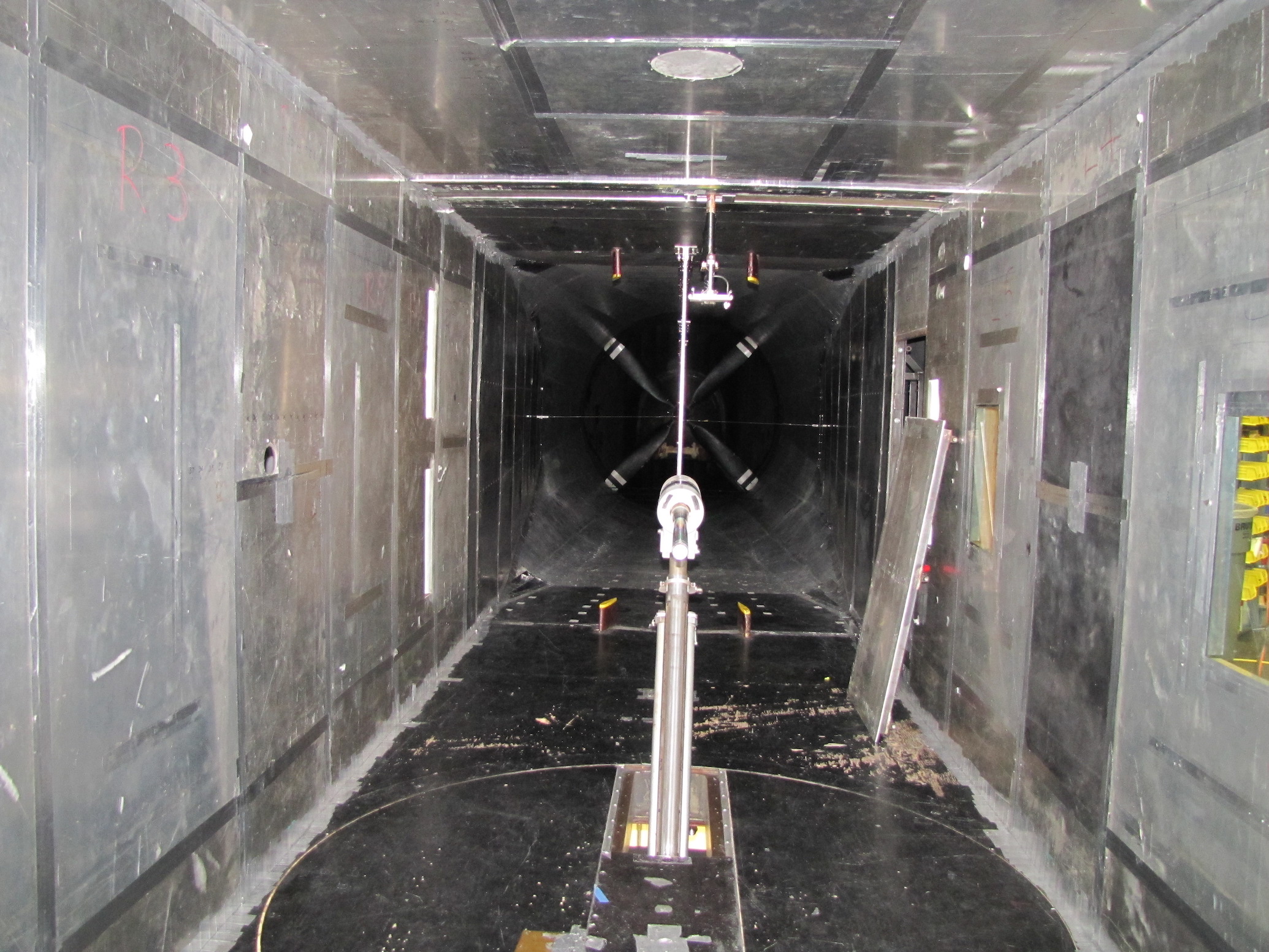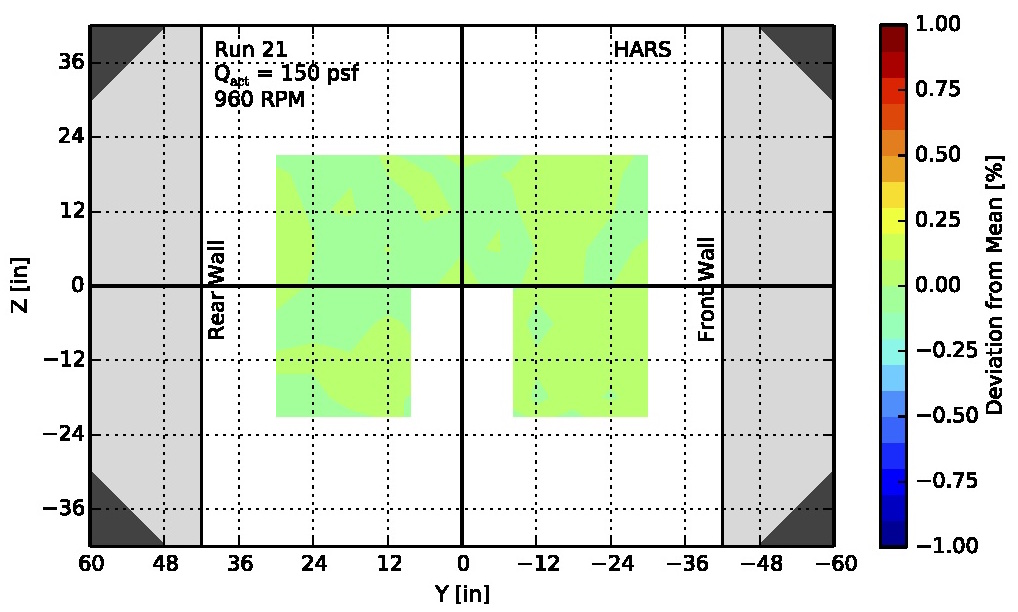The reduced test section for the LSWT uses aluminum panels to bring in the walls of the test section from a 7 ft by 10 ft area to 7 ft by 7 ft. In addition to the test section itself, there is also an installed diffuser that helps the air expand more gently.
The 7×7 test section and diffuser were designed by graduate students working on thesis projects about improving the performance of the wind tunnel. The original 7×7 was designed and built by Dipankar Sahoo in 2008. His thesis was to test the effects of a flapping wing, and the 7×7 structure helped to facilitate that. Sahoo originally built the test section and an 8 foot diffuser, but unfortunately the diffuser did not perform as expected and the test section insert fell into disuse.
In the summer of 2014 another masters student, Alex Herring, began design work on a diffuser to attach to Sahoo’s test section that would allow the tunnel to reach Mach 0.4. His diffuser design was successful and his project left the 7×7 Reduced Test Section as it is today.

The reduced test section does have its limitations, however. The walls sit on the turntable and will not allow the turntable to change angles while the 7×7 is installed. Also, because the area is smaller the models must be smaller in order to not cause too much blockage through the test section. However, the faster speeds provided by the reduced test section have opened new testing envelopes and there is much excitement in the exploration of
what is now possible at the LSWT.


